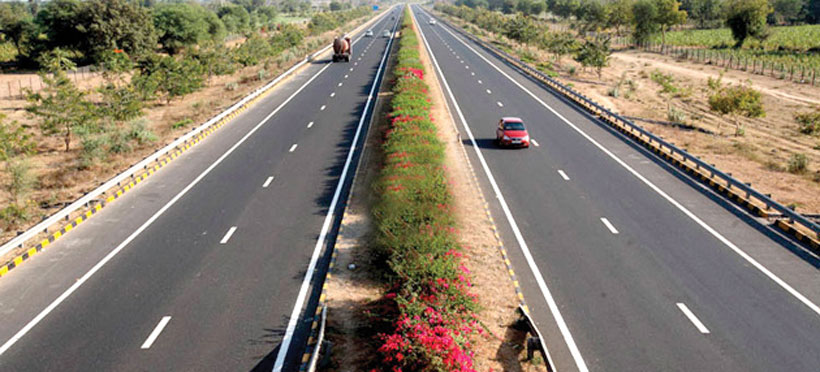Unlocking the Development Potential of the National Highways and Roads Sector

Sandeep Upadhyay, MD & CEO, Centrum Infrastructure Advisory Ltd
Routes to award projects
The Build-Operate-Transfer (BOT) model in its toll and annuity formats, has been the preferred route of the government to award road contract projects. Under the BOT (annuity) format, a highway is built by a developer and operated for a specific period of time. It is then transferred to the government for which an annuity is paid to the developer. In the BOT (toll) model, the developer constructs a road and recoups his investment by collecting toll on a long-term basis of about 15-20 years. However, in the last 5-6 years, the efficacies of the BOT model have been bogged down by factors like reckless bidding, rise in borrowing costs, restricted access to credit, stressed balance sheets, and delays by various departments to award timely clearances and approvals. There has been a tangential shift in the manner in which road projects are awarded with the government exploring the viability of other models like the Engineering-Procurement-Commissioning (EPC) model in order to revive the interest of private road developers. Under the EPC model, the capital expenditure on road development projects is incurred entirely by the government through agencies like the NHAI, the sole agency responsible for development of national highways at the Central level, and various State Road Development Corporations at the state level.

In order to fast-pace the construction of highways and galvanize stranded projects, the Cabinet Committee on Economic Affairs (CCEA) gave the go-ahead to the Hybrid Annuity Model, touted as a mix of BOT (Toll) and EPC models. Under the hybrid annuity model, 40% of the project cost is borne by the government and rest by the developer in the course of project execution. The model provides for a division of risks between the government and the developer who is responsible for the construction and maintenance of the project and remains protected from inflation vagaries and revenue risks. Revenue collection is the sole domain of NHAI and developers receive their dues in annual instalments in specified time-frames. The NHAI has awarded more than 40 projects under the hybrid annuity model till date
The government has approved the Toll-Operate-Transfer (TOT) model for monetizing operational road assets, which have been generating toll revenues for a minimum period of two years. Under this model, toll highways operated by the NHAI shall be leased to firms which are responsible for operating a project and collecting a toll in return for paying an upfront fee to the government. Since this model does not require the investor to bear construction risks, pension funds and sovereign funds with a long-term investment outlook could become potential investors by bidding through an international competitive bidding model. The TOT model is widely expected to release unutilized capital in completed projects, which could be diverted to developing brownfield road infrastructure projects.
Risks & Challenges
In the context of the current subdued financial environment, I find HAM as a relevant and sustainable model, and one which could stand the stress test on viability matrix for stakeholders across the value chain. Though there were initial glitches and some apprehension around the complexity of bidding parameters, the model is all set to pick up pace in the next couple of months.
Currently, more than 45 projects have been awarded on HAM as on date, out of which, only about one-third have achieved financial closure with some projects called for re-bid due to inability of promoters to achieve financial closure. The primary risks perception from the potential stakeholders for HAM road projects revolves around termination related payment clauses in the concession agreement, ability of the promoters to bring in their portion of equity, and also, to an extent, around NHAI’s bandwidth to fund the VGF and future Annuity payments.
Given this skeptic approach, I see the banks to continue being the weakest link, and hence, it is imperative that the Authority proactively addresses the above risks and reassures the potential stakeholders about the largely de-risked roll-out (Hybrid) model. Sharing comprehensive details about the means of financing for the mega development plan may also go a long way to instill confidence amongst potential stakeholders including the fact, that once commissioned, the operational HAM projects could be monetized on Toll Operate Transfer (TOT) scheme, primarily accounting for a significant source of annuity payouts on behalf of NHAI.
Initiatives to Accelerate Pace of Investments
The government has formulated key initiatives to mobilize resources and accelerate the pace of domestic and overseas investments in various road infrastructure development projects. The CCEA has given approval to an exit policy wherein developers have been allowed to leave highway projects two years after construction has been completed. This is seen as a key measure to release locked equity capital as potential investment for planned and under-development projects. The NHAI has been empowered by the CCEA to disburse loans to activate projects which have been stalled on account of limited equity or inability of the developer to raise capital. There is a proposal to permit government-to-government funding for raising funds and fast-tracking road development projects. A corpus of `8,500 crore has been raised by NHAI from state insurer Life Insurance Corporation of India (LIC)at an interest rate of 7.22% per year for 30 years. The funds are planned to be expended for expansion of road projects and building bypasses on national highways. NHAI bonds worth `10,000 crore have been subscribed by the Employees’ Provident Fund Organization (EPFO) at 8.03 percent interest per annum for 25 years. The Highways Regulator has also been permitted by the finance ministry to borrow `50,000 crore through bonds in the present financial year. A supportive macro environment in the form of key policy initiatives like government backed loans, completion of land acquisition process and issuing of permits in a timely manner, exemption from tax during construction of large-scale highway projects, and extending fiscal incentives like elimination of MAT during tax holidays can go a long way in unlocking the latent development potential of the roads and highways sector.
I see the Road Sector well poised to recover over the next year or so. However, the biggest resistance as of now continues to surface from the lending community. The recent success of innovative financing structures like the Infrastructure Investment Trusts (InVIT), and encouraging participation from Pension and Sovereign Funds, are positive steps towards achieving the aspirational targets MoRTH has set for itself.
Given the expeditious pace at which the Indian economy is growing, and the consequent rapid rise in passenger and freight traffic movement across India, demand for roads and highways is fast outpacing the supply. The glaring demand-supply gap in the roads and highways sector presents a far-reaching potential for its growth and development. A well-connected and efficiently maintained road network can have a ripple effect on industries like logistics, vastly improving its last mile delivery capabilities and boosting its outreach in the under-penetrated corners of the country. This is a high priority sector for the Government of India, and its inclusive growth and development with an emphasis on maintenance and modernization, is the key to placing India on a higher economic growth trajectory.
NBM&CW July 2017



















